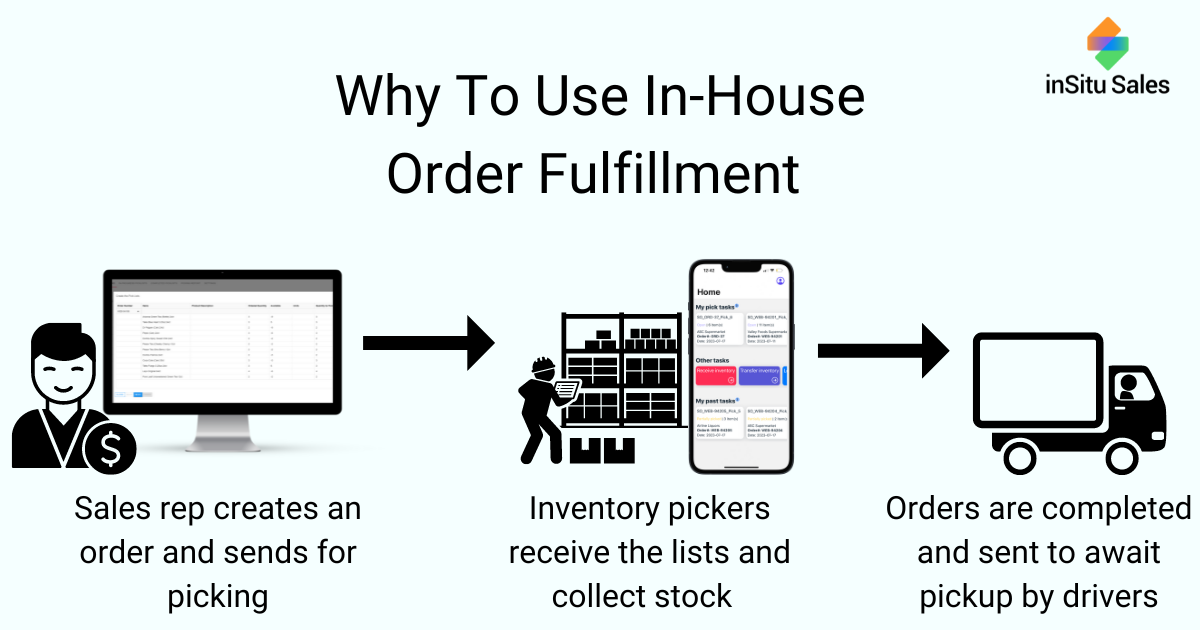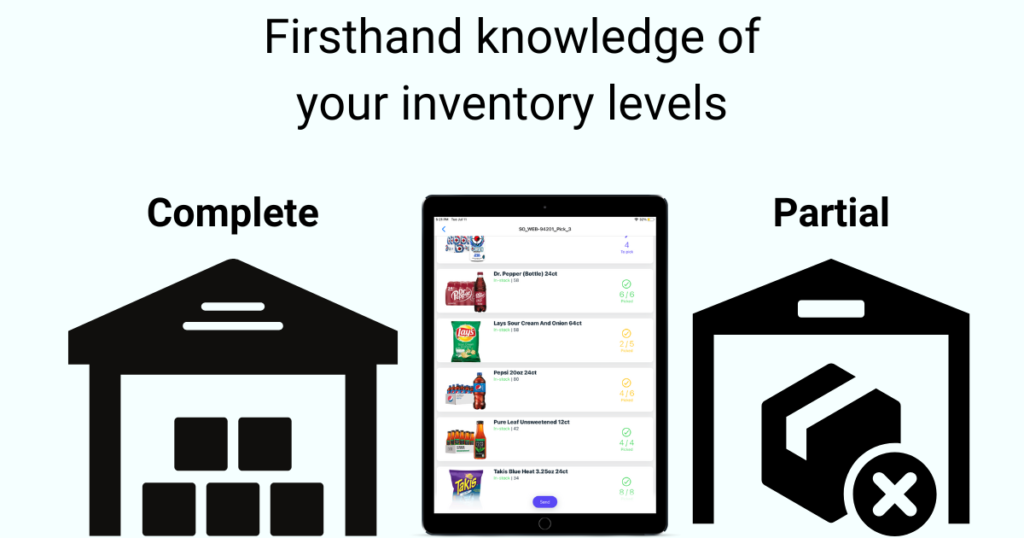
Why To Use In-House Order Fulfillment
In the rapidly evolving world of distribution, both field sales and e-commerce alike rely on efficient order fulfillment as the backbone of a successful, trusted business. When it comes to handling the critical process of delivering products to customers, businesses have two options: outsourcing the task to third-party fulfillment centers or adopting an in-house order fulfillment strategy. In this article, we’ll explore the advantages of using in-house order fulfillment and why it has become a popular choice for e-commerce businesses seeking to take control of their operations and boost customer satisfaction.
Table of Contents
-
Understanding Order Fulfillment
- The Significance of Order Fulfillment
- Key Elements of the Order Fulfillment Process
-
Pros and Cons of Outsourcing Order Fulfillment
- Advantages of Outsourced Order Fulfillment
- Limitations and Risks of Outsourcing
-
The Growing Importance of In-House Order Fulfillment
- The Shift Toward In-House Fulfillment
- Factors Driving the Trend
-
Benefits of In-House Order Fulfillment
- Gaining Control Over Fulfillment Operations
- Enhanced Flexibility and Customization
-
The Role of Technology in In-House Fulfillment
- Automation and Efficiency
- Integration with E-Commerce Platforms
-
Investing in Human Capital
- Building a Competent and Dedicated Team
- Fostering a Fulfillment-Centric Culture
-
Optimizing Inventory Management
- Real-Time Inventory Tracking
- Reducing Stockouts and Overstocking
-
Speed and Customer Experience
- Faster Order Processing and Shipping
- Personalized Packaging and Branding
-
Cost Considerations and ROI
- Initial Investment vs. Long-Term Savings
- Measuring the Return on Investment
-
Overcoming Challenges in In-House Fulfillment
- Managing Peak Seasons and Fluctuating Demand
- Addressing Warehouse Space Constraints
-
Sustainability and Environmental Impact
- Eco-Friendly Packaging Practices
- Reducing Carbon Footprint
-
In-House vs. Outsourced Fulfillment: Making the Right Choice
- Evaluating Business Needs and Goals
- Identifying the Best Fit for Your Business
Understanding Order Fulfillment
E-commerce order fulfillment is the process of receiving, processing, and delivering customer orders. It involves multiple steps, such as order verification, inventory picking, packaging, and shipping, ultimately culminating in a satisfied customer.
Pros and Cons of Outsourcing Order Fulfillment
Outsourcing order fulfillment can provide benefits like reduced overhead costs and access to specialized expertise. However, it may lead to limited control over fulfillment processes and potential delays in delivery. Inventory levels can change rapidly between transactions, and it can’t be guaranteed that whichever third party warehouse is involved in fulfillment will be able to relay accurate real-time data. For a smooth operation, every part of your business needs to be integrated and synced onto the same platform for an overhead view.

The Growing Importance of In-House Order Fulfillment
Increasingly, businesses are recognizing the advantages of in-house order fulfillment. Taking control of fulfillment operations offers businesses greater flexibility, customization options, and the ability to directly address customer needs.
Benefits of In-House Order Fulfillment
Gaining Control Over Fulfillment Operations
With in-house order fulfillment, businesses have a hands-on approach, allowing them to establish streamlined processes and respond quickly to changing demands.
Enhanced Flexibility and Customization
In-house fulfillment enables businesses to personalize packaging, add personal touches, and create a unique brand experience for customers.
The Role of Technology in In-House Fulfillment
Automation and integrated technology solutions play a pivotal role in improving order accuracy, tracking inventory, and optimizing warehouse efficiency.
Investing in Human Capital
Building a competent and dedicated fulfillment team is crucial for smooth operations. A motivated team fosters a positive work culture and ensures efficient order processing.
Optimizing Inventory Management
Real-time inventory tracking helps prevent stockouts and overstocking, reducing fulfillment inefficiencies and potential revenue loss.
Speed and Customer Experience
In-house fulfillment allows businesses to prioritize faster order processing and shipping, resulting in improved customer satisfaction.
Cost Considerations and ROI
While in-house fulfillment requires an initial investment, it can lead to significant cost savings and higher ROI in the long run.
Overcoming Challenges in In-House Fulfillment
Businesses need to strategize to manage peak seasons, fluctuations in demand, and maximize warehouse space effectively.
Sustainability and Environmental Impact
Adopting eco-friendly packaging practices aligns with customer preferences for sustainable business practices, benefiting both the environment and brand reputation.
In-House vs. Outsourced Fulfillment: Making the Right Choice
Choosing between in-house and outsourced fulfillment depends on the business’s specific needs, growth projections, and long-term objectives.
Conclusion
In-house order fulfillment has emerged as a powerful strategy for e-commerce businesses seeking greater control, flexibility, and customer-centric operations. By investing in technology, human capital, and sustainable practices, businesses can deliver exceptional customer experiences, boost efficiency, and build a solid foundation for future growth. Embrace in-house order fulfillment to unlock your e-commerce potential and drive success in an increasingly competitive market.
FAQs
- Is in-house order fulfillment suitable for small businesses?
- Yes, in-house order fulfillment can benefit small businesses by offering more control, customization, and efficiency in their fulfillment process.
- How can I decide between in-house and outsourced fulfillment?
- Evaluate your business’s unique needs, growth projections, and budget constraints to determine the most suitable fulfillment solution.
- What technologies can I implement to optimize in-house fulfillment?
- Inventory management systems, order tracking software, and automation tools are some of the key technologies to improve in-house fulfillment efficiency.
- Can in-house order fulfillment help improve my brand’s customer experience?
- Absolutely! In-house fulfillment allows you to personalize packaging and provide faster shipping, contributing to a positive and memorable customer experience.
- What are some eco-friendly packaging options for in-house fulfillment?
- Eco-friendly packaging materials like recycled cardboard, biodegradable plastics, and minimalistic packaging design can reduce your environmental impact.
